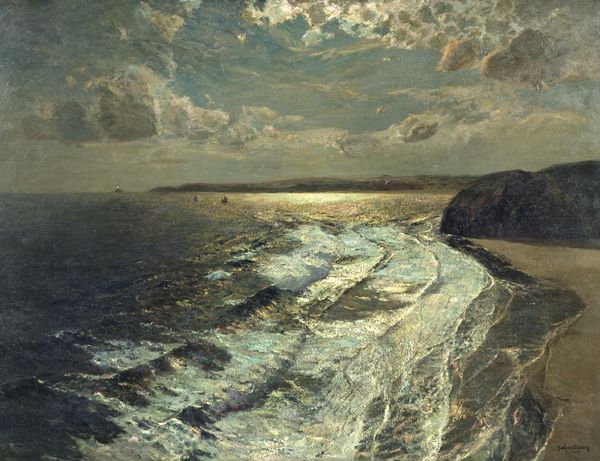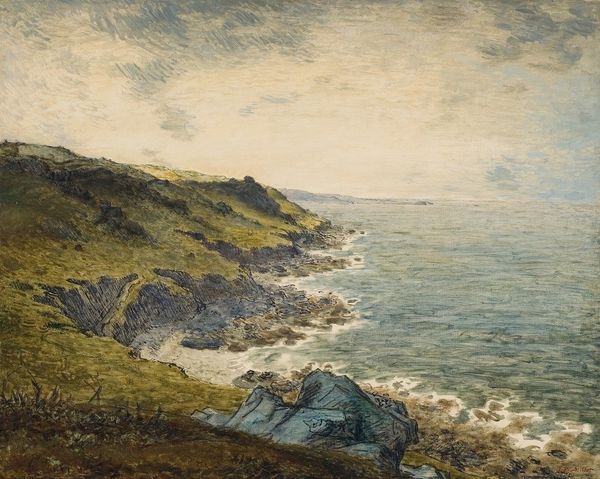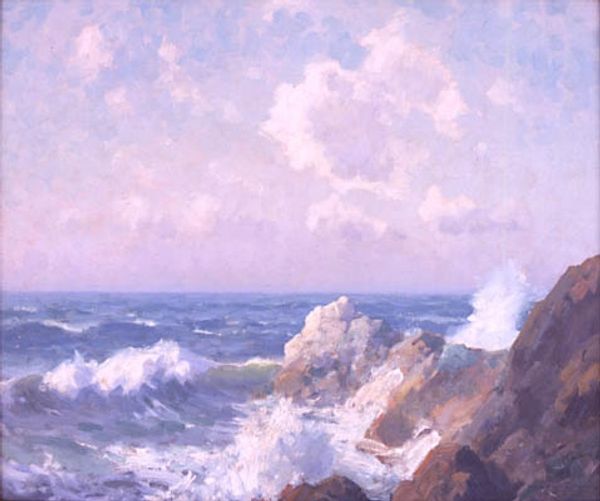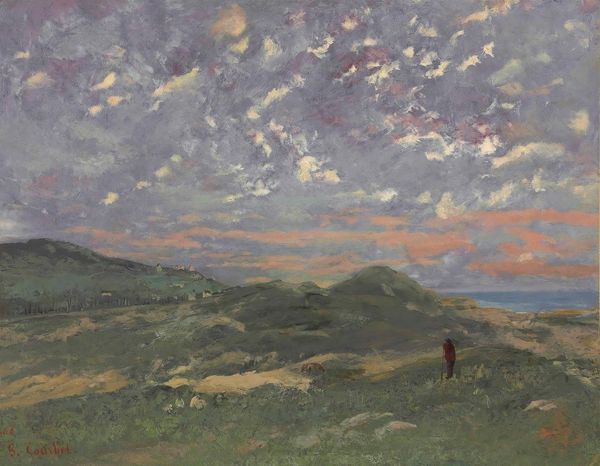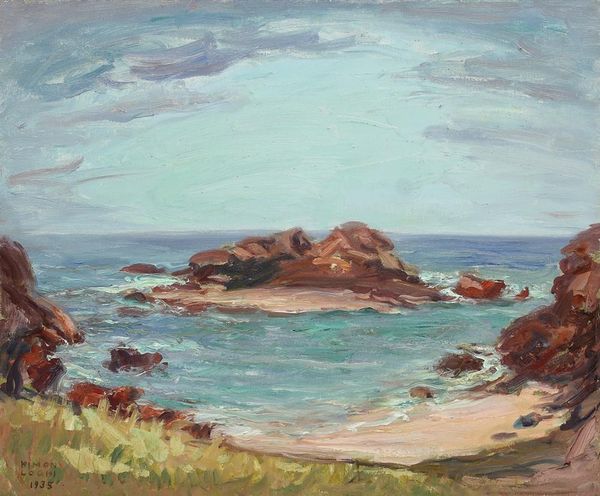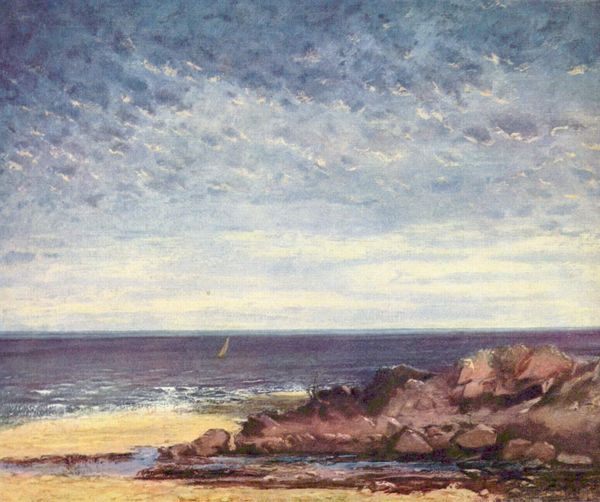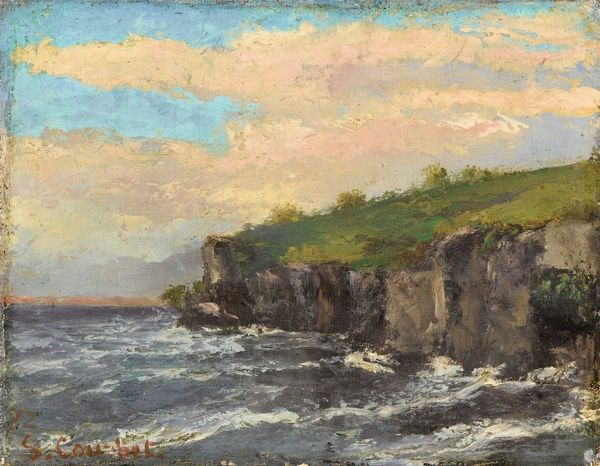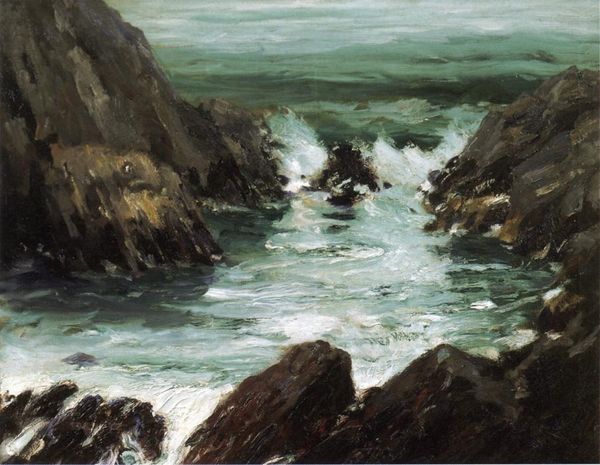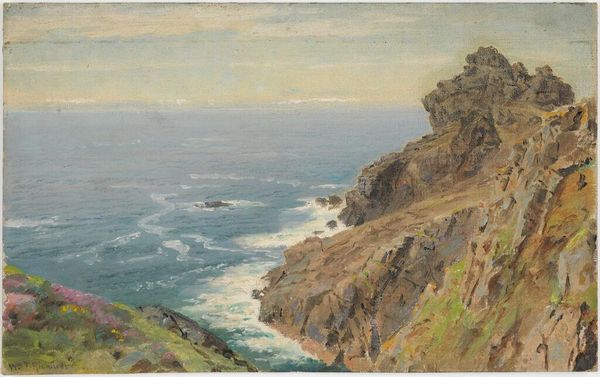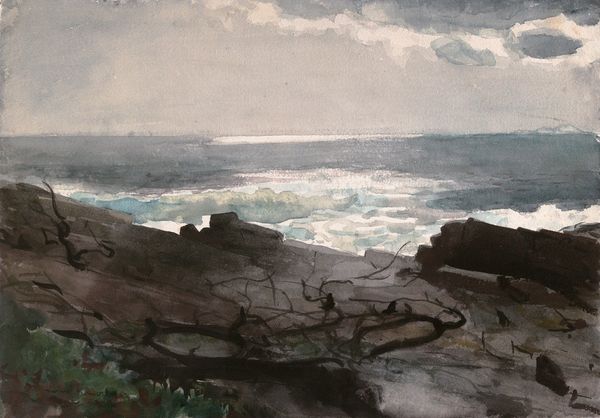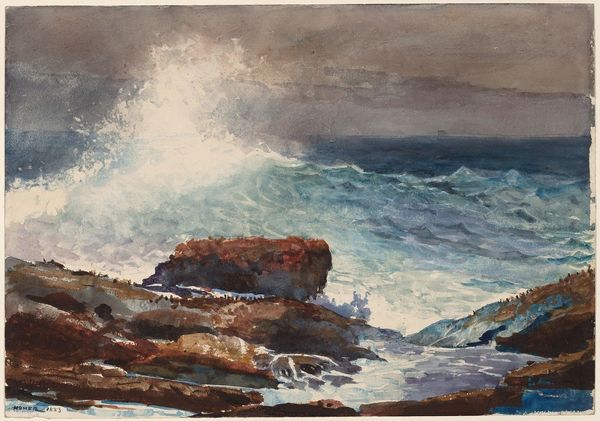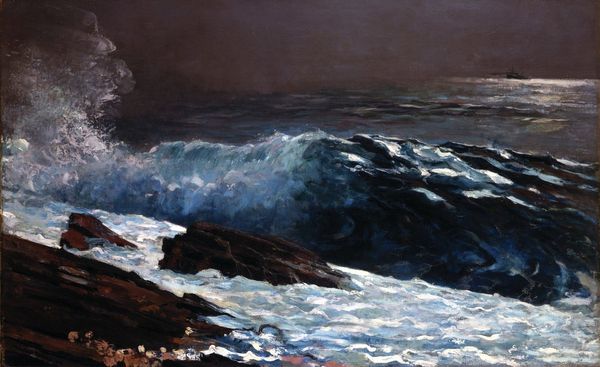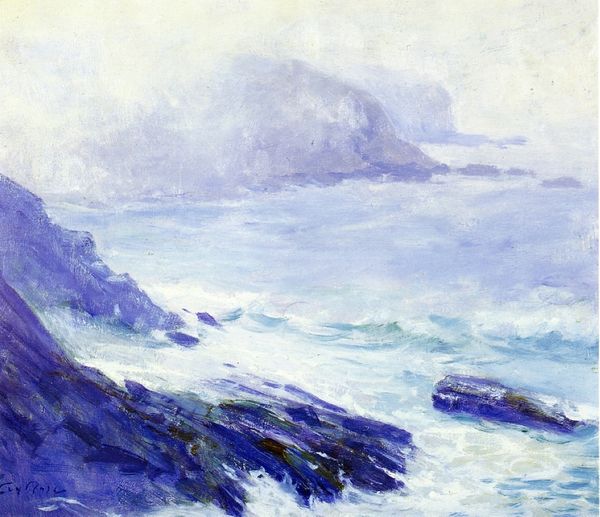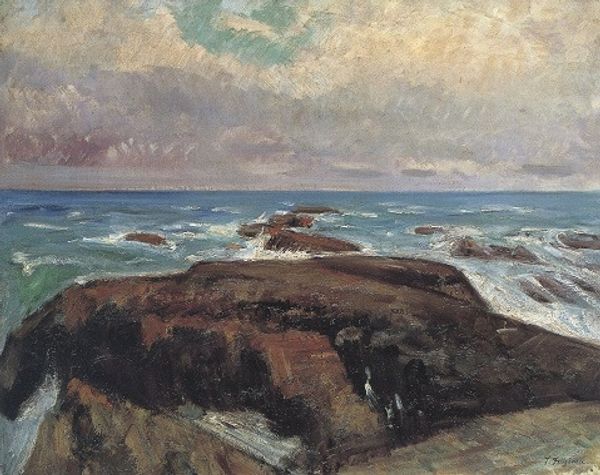
Copyright: Public Domain: Artvee
Curator: Jean-François Millet’s "Les falaises de Gréville," painted between 1871 and 1872. Look at how the oil paint captures the cliffs overlooking the sea. It’s like a hushed stage before the storm. Editor: I see a quiet intensity—that churning sea with foamy white caps hints at power. I almost feel the dampness in the air, and the rough texture of the rocks against my hand. It is an invitation to reflection. Curator: Indeed, it reflects a transition in Millet's work, leaning toward the impressionistic but still firmly rooted in realism. I mean, this region held a significant emotional weight for him, as it's where he spent his childhood. Think about that childhood shaping his view. Editor: The rocks themselves could be read as steadfast sentinels of time, each one carrying stories of weathering and endurance. There’s almost a primal energy, that pull between earth and water, mirrored in the sky. Curator: Right, the landscape seems to function as a repository of memory and the infinite nature that surpasses individual lifetimes. Even the sky feels symbolic, pregnant with both potential and passing. Editor: I keep being drawn back to the water... that mesmerizing shimmer pulls me towards contemplating its connection to unconsciousness. Perhaps the water’s surface mirroring a dream. Curator: It also speaks to the relationship between Millet and his environment, with the post-impressionist nuances acting as almost direct sensory translations. A translation of the feelings. Editor: Perhaps this is why its lasting effect feels familiar...it is the elemental struggle of existence transformed into visual metaphor. In the end, these cliffs aren't just a location, they become symbols for our human condition. Curator: Absolutely, "Les falaises de Gréville" is about remembering, feeling, and representing through material a lasting moment that, while gone in life, is immortalized in art. Editor: What is interesting to me, is its almost archetypical significance--enduring cliffs meet wild sea. A painting pregnant with meaning that still manages to be so quietly personal.
Comments
No comments
Be the first to comment and join the conversation on the ultimate creative platform.
